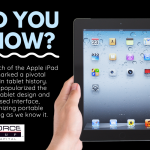Walkie-Talkies: Bridging the Communication Gap Across History
In the annals of human history, certain inventions have left an indelible mark on the way we connect, communicate, and collaborate. The walkie-talkie, a remarkable device born during the throes of World War II, stands as a testament to human ingenuity and the unceasing quest for effective communication.
This blog post embarks on a historical journey through the evolution of walkie-talkies, those iconic handheld radios that revolutionized the way we communicate. From their origin amidst the chaos of war to their enduring relevance in diverse fields, the story of walkie-talkies is a testament to their pivotal role in bridging communication gaps throughout history.
Let’s delve into the intriguing world of walkie-talkies, exploring their birth, impact, and the multitude of roles they continue to play in our lives.
A Pivotal Moment in Communication History
In the annals of communication history, certain inventions stand out as pivotal, altering the course of human interaction and connectivity. One such invention, the walkie-talkie, emerged during World War II, forever transforming the way we communicate. In this blog post, we embark on a historical journey through the evolution of walkie-talkies, exploring their origin, impact, and enduring relevance.
The Birth of Walkie-Talkies
The story of walkie-talkies begins in the midst of the tumultuous years of World War II. Prior to their invention, communication on the battlefield relied heavily on telephone lines, wires, and messengers. These methods were cumbersome, prone to disruption, and ill-suited for the fast-paced and mobile nature of modern warfare.
Enter the walkie-talkie, a revolutionary invention that allowed soldiers to communicate on the move. This innovation marked a pivotal moment in communications history, providing a lifeline for troops and commanders alike.
The World War II Revolution
The invention of the walkie-talkie was a testament to human ingenuity and the need for effective communication in the most challenging circumstances. These portable, handheld devices provided troops with real-time, long-distance communication, facilitating coordination, and tactical maneuvers. They became an indispensable tool on the battlefield, contributing to the success of Allied forces.
Walkie-talkies offered several advantages during World War II:
Mobility: Soldiers could now communicate while on the move, allowing for rapid response and adaptability in combat situations.
Reliability: Unlike wired communication systems, walkie-talkies were less vulnerable to disruption, ensuring a constant flow of information.
Security: The ability to encrypt messages made it difficult for the enemy to intercept and decode communications.
Post-War Applications
After World War II, walkie-talkies found applications far beyond the battlefield. They became instrumental in various industries, including aviation, construction, law enforcement, and emergency services. These portable radios provided an effective means of communication in situations where wired connections were impractical.
Aviation: Pilots and air traffic controllers relied on walkie-talkies for clear and efficient communication during flights.
Construction: Walkie-talkies became a staple on construction sites, enabling workers to coordinate tasks and ensure safety.
Law Enforcement: Police officers and first responders used walkie-talkies to coordinate responses to emergencies and maintain public safety.
Outdoor Adventures: Walkie-talkies became popular among outdoor enthusiasts, hikers, and campers for staying connected in remote areas.
Modern Walkie-Talkies and Their Applications
Walkie-talkies have continued to evolve in the digital age. Modern iterations offer features such as increased range, clearer audio quality, and enhanced battery life. They remain essential in numerous professional fields and recreational activities.
Public Safety: Police, fire, and emergency medical services rely on advanced walkie-talkie systems to ensure effective coordination during critical situations.
Search and Rescue: Walkie-talkies play a crucial role in search and rescue missions, helping teams stay in contact and locate missing persons.
Hospitality: Hotels, event venues, and hospitality businesses use walkie-talkies to enhance guest services and streamline operations.
Recreational Use: Walkie-talkies remain popular for outdoor enthusiasts, enabling communication in remote areas where cell phone signals are weak or nonexistent.
In conclusion, the walkie-talkie’s journey from its inception during World War II to its continued relevance in various sectors today is a testament to its enduring utility and adaptability. This remarkable invention bridged communication gaps on the battlefield and beyond, forever shaping how we connect, coordinate, and collaborate.
Sources:
- “The History of Walkie-Talkies” – TwoWay-Radio: https://www.twoway-radio.co.uk/history-of-walkie-talkies
- “Walkie-Talkies: Lifelines in Crisis — How Two-Way Radios Save Lives in” – Medium: https://medium.com/@koushiki1310/walkie-talkies-lifelines-in-crisis-how-two-way-radios-save-lives-in-emergency-situations-c8e0b01ceefb
- “The History of Walkie Talkies” – Walkie Talkies: https://walkie-talkies.net/blog/post/history
- “How does the walkie-talkie work in emergency rescue operations?” – Ailunce: https://www.ailunce.com/blog/How-does-the-walkie-talkie-work-in-emergency-rescue-operations-
- “Choosing the Right Walkie Talkie for Your Business” – Tech Wholesale: https://techwholesale.com/best-walkie-talkies-for-business-use/





